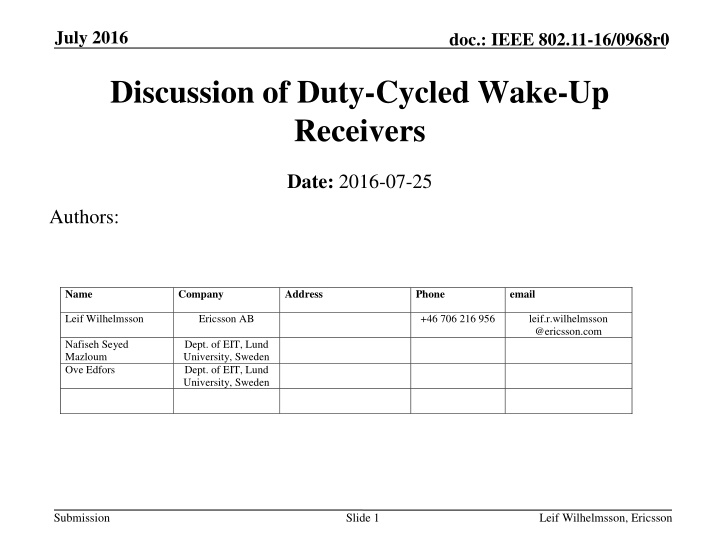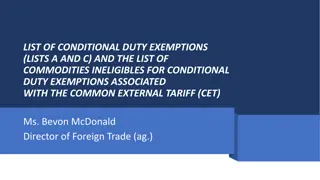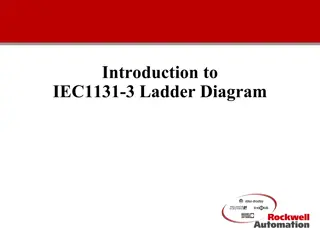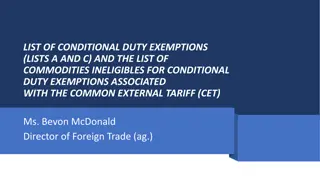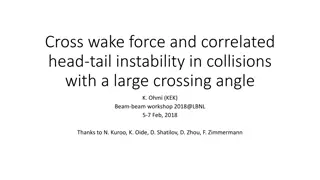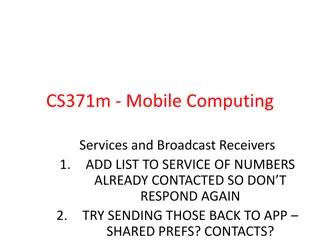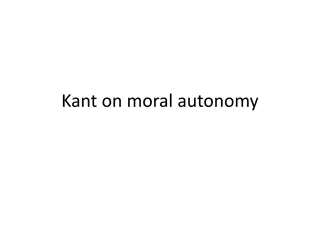Discussion of Duty-Cycled Wake-Up Receivers
This contribution discusses duty-cycled Wake-Up Receivers (WURs) with a focus on different trade-offs, total power consumption metrics, and the balance between power consumption and spectrum requirements for the wake-up signal. Various duty-cycled wake-up schemes and considerations for selecting the duty cycle are explored in detail.
Uploaded on Feb 20, 2025 | 3 Views
Download Presentation

Please find below an Image/Link to download the presentation.
The content on the website is provided AS IS for your information and personal use only. It may not be sold, licensed, or shared on other websites without obtaining consent from the author.If you encounter any issues during the download, it is possible that the publisher has removed the file from their server.
You are allowed to download the files provided on this website for personal or commercial use, subject to the condition that they are used lawfully. All files are the property of their respective owners.
The content on the website is provided AS IS for your information and personal use only. It may not be sold, licensed, or shared on other websites without obtaining consent from the author.
E N D
Presentation Transcript
July 2016 doc.: IEEE 802.11-16/0968r0 Discussion of Duty-Cycled Wake-Up Receivers Date: 2016-07-25 Authors: Name Company Address Phone email Leif Wilhelmsson Ericsson AB +46 706 216 956 leif.r.wilhelmsson @ericsson.com Nafiseh Seyed Mazloum Ove Edfors Dept. of EIT, Lund University, Sweden Dept. of EIT, Lund University, Sweden Submission Slide 1 Leif Wilhelmsson, Ericsson
July 2016 doc.: IEEE 802.11-16/0968r0 Abstract This contribution addresses duty-cycled WURs, in particular different trade-offs. It somewhat builds on [3] The presentation is in part based on [1], where the total power consumption is the metric used to find suitable parameters for the duty cycle We also discuss the trade-off between low power consumption in the sensor node and spectrum requirements for the wake-up signal (WUS) Submission Slide 2 Leif Wilhelmsson, Ericsson
July 2016 doc.: IEEE 802.11-16/0968r0 Outline Recap of duty-cycled WURs Designing the duty-cycle based on total power consumption Discussion of the trade-off between power consumption in the duty-cycled WUR and spectrum usage Conclusions Submission Slide 3 Leif Wilhelmsson, Ericsson
July 2016 doc.: IEEE 802.11-16/0968r0 Duty-cycled wake-up schemes To further decrease the power consumption of the WUR, it may be duty-cycled, i.e., it is only turned on during certain (periodic) intervals Could also be seen as a way to achieve really low power consumption with non-optimized WUR Submission Slide 4 Leif Wilhelmsson, Ericsson
July 2016 doc.: IEEE 802.11-16/0968r0 Duty-cycled wake-up schemes To wake up a duty-cycled WUR means that the WUS must be transmitted when the WUR is actually listening The reception of the WUS is then acknowledged and the data packet is not sent until an ACK of the WUS is received Submission Slide 5 Leif Wilhelmsson, Ericsson
July 2016 doc.: IEEE 802.11-16/0968r0 How to select the duty-cycle? Low duty cycle: Higher transmission cost, both energy and channel allocation. In addition to larger delay High duty cycle: The gain by using WUR reduced Submission Slide 6 Leif Wilhelmsson, Ericsson
July 2016 doc.: IEEE 802.11-16/0968r0 Design based on total power consumption [1] The idea is here to have a model that accounts for Transmit power of WUS at AP Power at the intended WUS Power at all other devices having a WUR Considered parameters are WUS length (false alarm vs. miss probability) Impact of sensitivity Submission Slide 7 Leif Wilhelmsson, Ericsson
July 2016 doc.: IEEE 802.11-16/0968r0 WUR energy vs. spectrum efficiency A low duty cycle means lower power consumption in the WUR, but it also means the wake-up signal needs to be transmitted more times on average to wake up the WUR If the WUS requires more transmission time, it may potentially have an impact on the transmission time available for data if sent in-band. Depends on number of WURs, and how often it needs to be used Submission Slide 8 Leif Wilhelmsson, Ericsson
July 2016 doc.: IEEE 802.11-16/0968r0 Conclusions Duty-cycled WURs is an attractive means to achieve very low energy consumption Duty-cycled WURs also have some drawbacks, in terms of Delay Spectrum usage (transmission time) for the WUS Power consumption at the TX side Submission Slide 9 Leif Wilhelmsson, Ericsson
July 2016 doc.: IEEE 802.11-16/0968r0 Straw Poll Should duty-cycling be considered when specifying the WUR (e.g. in terms of target power consumption, should power consumption relate to the ON state for the WUR, or is it OK if this is achieved by duty cycling?) Y/N/A: Submission Slide 10 Leif Wilhelmsson, Ericsson
July 2016 doc.: IEEE 802.11-16/0968r0 Straw Poll Assuming the wake-up signal is transmitted in-band, do you expect there may be scenarios where the total transmission time for WUSs may have a noticeable impact on the available transmission time for data? Y/N/A: Submission Slide 11 Leif Wilhelmsson, Ericsson
July 2016 doc.: IEEE 802.11-16/0968r0 References 1. N. Seyed Mazloum and O. Edfors, Performance Analysis and Energy Optimization of Wake-Up Receiver Schemes for Wireless Low-Power Applications , IEEE Transactions on Wireless Communications, Vol. 13, No. 12, pp. 7050-7061, 2014. M. Park, S. Azizi, R. Stacey, and E. Perahia. LP-WUR (Low-Power Wake-Up Receiver): Enabling Low-Power and Low-Latency Capability for 802.11, IEEE 802.11-16/0027r0 L. Wilhelmsson, T. Olsson, and H. Sj land, Discussion of Wake-Up Receivers for LRLP , IEEE 802.11-16/0381r0 2. 3. Submission Slide 12 Leif Wilhelmsson, Ericsson
